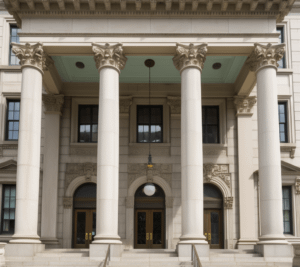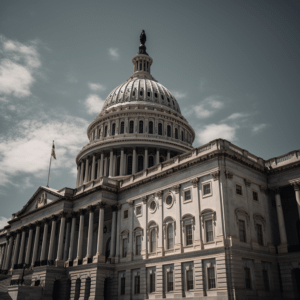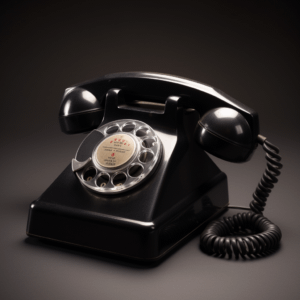The control that pharmaceutical manufacturers have over price setting is practically unparalleled in any other industry. Pharmaceutical manufacturers have the ability to demand sky-high prices for life-saving drugs and developments with very little oversight and practically no accountability from competitive market forces. From near simultaneous price hikes on insulin from its three major manufacturers to a 5,000 percent increase overnight on the cost of Daraprim, there is no shortage of examples of some of the major players in Big Pharma taking advantage of their powerful positions.
However, reporting best price fraud is one way that average people can stand up to corporate greed. Pharmaceutical manufacturers and distributors that misrepresent their prices to the federal government for Medicaid reimbursement can be held accountable under the False Claims Act.
If you suspect you may have information about best price fraud and Medicaid rebates, you may be able to become a whistleblower. Whistleblowers receive legal protection against retaliation by their employers as well as the possibility of being awarded a percentage of the overall recovery from the case. You can report pharmaceutical best price fraud anonymously through a healthcare fraud qui tam law firm. If you have questions, contact the law firm of Tycko & Zavareei LLP today for a complimentary and confidential consultation.
What is Best Price Fraud?

In 1989, the Senate Special Committee on Aging issued a particularly damning report on rising drug prices. According to the report, “rising drug prices, particularly the high prices of new drugs, are driving State Medicaid program costs and projected Medicare drug benefit expenditures to unsustainable levels.” The report concluded that these kinds of dystopian price hikes induced “Congress to consider reducing benefits to the elderly and poor, and forcing State legislatures to choose between funding drug benefits or other health care needs of the elderly and poor.”
The Medicaid best price rule was thus established as part of the 1990 federal budget, establishing the Medicaid drug rebate program. Under this program, Medicaid members, whether they be individual subscribers or the State as a whole, are supposed to be charged the manufacturer’s “best,” or lowest, price for a drug. In exchange, Medicaid will cover essentially all of the manufacturer’s drugs, increasing the company’s possible reimbursement from the federal government. Participation in the Medicaid drug rebate program is all but mandatory, and refusal to participate signifies a manufacturer’s exclusion from all federal programs, including both Medicaid and Medicare.
Critics of the program point out that reporting of what a drug’s “best price” may be is done by the companies themselves, and has been a target for fraud and corruption. Additionally, the creation of new drugs has led to a significant drain on the Medicaid drug rebate program, as prices for new developments are set directly by the companies themselves.
Best Price Definition
The Medicaid best price is set by data currently available on the open market. It is the “lowest price” that the drug is currently available for across the entire market. The Medicaid best price calculation includes rebates available at pharmacies, wholesale pricing, and volume discounts.
 Medicaid Best Price Requirements
Medicaid Best Price Requirements
The best price rule states that a Medicaid member is guaranteed to never pay a higher price than the agreed-upon best price for the drug that they need. This does not mean substituting a generic equivalent, but paying a lower rate for the drug itself at pharmacies and wherever else it is available. The federal government supplements the difference in price, which is then set to be reimbursed by the manufacturer back to the program.
Medicaid Best Price Rebate Formula
The Medicaid best price rebate formula is uses the difference between the best price (BP) and the average wholesale price (AWP). For example, say that a Medicaid patient pays $42 for a prescription drug at the pharmacy. However, the best price for the drug is actually $12. This means that the manufacturer owes Medicaid $30 as a rebate in order to reduce the cost back down the agreed-upon best price.
Medicaid Rebate Fraud
Best price fraud often occurs when a company misreports a drug’s best price in order to reduce the rebate amount they owe to the government. For instance, if the aforementioned Medicaid patient buys the same $42 drug, but the best price is thought to be $22 instead of $12, then the company owes the government $10 less as a rebate. Over time, this amount adds up to cost taxpayers millions.
How to Identify Best Price Fraud
A key element in identifying best price fraud is understanding that AWP and BP are self-reported and self-regulated. A manufacturer may manipulate pricing in order to overcharge the government, while selling the drug at lower rates to private companies. They may also fail to report certain sales or discounts, flying under the radar from Medicaid detection.
Examples of different kinds of best price fraud include:
- Disguised price discounts: Some companies disguise price discounts to private purchasers as processing fees, educational grants, or financial investments. This allows them to report a higher best price to the government, thereby overcharging Medicaid and underpaying rebate prices.
- Kickbacks: Offering or receiving any kind of financial incentive in exchange for referrals or business is illegal in the medical field. Kickbacks are particularly prevalent in pharmaceutical best price fraud, in an effort to misleadingly reduce the BP to AWP spread for products. Kickbacks may be non-direct monetary exchanges, such as offering hotel stays, airfare miles, or other kinds of benefits.
- Providing discounts or rebates off-the-record: Some examples of illegal kickbacks or other kinds of best price fraud involve misreporting market price rates by hiding certain exchanges or sales at lower prices.
Common Qui Tam Relators in Best Price Fraud Cases
Anyone with insider information about fraud can become a whistleblower. You do not have to work for the company that has been perpetrating fraud, although you may be in a privileged position to report wrongdoing if 
- Prescription benefit managers
- Managed care providers
- Pharmacists
- Wholesale purchasers
- Healthcare providers
- Employees at pharmaceutical companies
Best Price Fraud Examples
In the pricing context, the Department of Justice has pursued lawsuits against pharmaceutical companies for failing to report accurate information to the Medicaid program under the Drug Rebate Statute in order to underpay rebates that they owe – a practice known as Medicaid rebate fraud. For example, one drug company paid $465 million to resolve allegations that it knowingly misclassified one of its drugs as a generic drug to avoid paying Medicaid rebates.
In this case, the whistleblower who reported the fraud to the Department of Justice was a competitor of the pharma company that paid the $465 million. This qui tam relator received $38.7 million as their share of the federal recovery, plus a share of the state’s recovery.
In another case, the Department of Justice sued a pharmaceutical company under the False Claims Act, alleging that it knowingly underpaid Medicaid rebates that it owed because of its large increases in the price of one of its drugs. This alleged Medicare rebate fraud was brought to the attention of the Department of Justice by an individual with knowledge of the fraud. The individual will be entitled to a share of the Government’s recovery once the lawsuit has ended.
How Does Best Price Fraud Violate the False Claims Act?

Under the Medicaid rebate program, pharmaceutical companies are responsible for paying Medicaid back for any amount paid in excess of a drug’s best price. These companies may defraud Medicaid by claiming a false best price to reduce the amount they must pay back to Medicaid. This violates the False Claims Act and could give rise to a valid qui tam whistleblower lawsuit.
Who is Harmed by Best Price Fraud?
Medicaid patients are harmed by paying higher prices for prescription drugs under best price fraud, but the damage does not stop there. Pharmaceutical companies take advantage of everybody by pursuing best price fraud. Taxpayers pay higher prices than they should for a program designed to protect older and vulnerable Americans. Corporate greed lines the pockets of investors while offering lower returns for social services.
How to Report Best Price Fraud
Anyone can report best price fraud anonymously when they act through a whistleblower law firm. The firm’s own name will operate on the investigation in lieu of your own on the complaint, protecting the whistleblower from the possibility of retaliation or harassment. In order to report best price fraud, speak to a whistleblower lawyer to understand what kinds of evidence you will need in order to build your case and convince the Department of Justice to open an investigation. Every case is different, depending on the kinds of information a whistleblower may organically have access to, as well as the extent of wrongdoing in place.
Best Price Fraud Whistleblower Rewards
In the event of a successful case, the whistleblower in a best price fraud case may be able to receive anywhere from 15 to 30 percent of the government’s overall recovery. This includes both repayment of stolen funds, as well as punitive fines mandated under the False Claims Act. Because damages are assessed at a treble rate under the federal statute, this total amount may end up quickly reaching into the hundreds of thousands, or million dollar range.
A whistleblower’s reward percentage is calculated based on the value of their information, the significance of the information in the process of the investigation and recovery, and the willingness with which they cooperate with the investigation. Culpability in planning or perpetrating the scheme is also considered in reducing a whistleblower’s reward, whereas promptness to report may increase the amount awarded.
Best Price Fraud: FAQs
1. Who can come forward as a best price fraud whistleblower?
Anyone can act as a best price fraud whistleblower. The most common best price fraud whistleblowers are employees of companies currently engaged in wrongdoing. Others may be medical staff, vendors, pharmacists, buyers who are offered kickbacks, insurance adjustors, or even competitors in the field who become aware of another company’s illegal activity.
 2. When should I contact a qui tam attorney about best price fraud?
2. When should I contact a qui tam attorney about best price fraud?
Contact a qui tam attorney as soon as you believe wrongdoing has occurred. You do not have to have already collected all of the evidence necessary to fully build your case, but you should have a concrete reason to believe that your suspicions are warranted. A qui tam attorney will then be able to advise you about what kinds of evidence are legal and useful to present the strongest possible case to federal investigators.
3. How are whistleblowers protected from retaliation?
Whistleblowers can sue for reinstatement and double back pay in the event of firing, demotion, suspension, harassment, or other kinds of retaliation. In the event that reinstatement is not possible, front pay may be an option. Other covered damages include attorneys’ fees and legal costs.
4. Can I remain anonymous in a qui tam lawsuit?
Yes. If you file your claim with the help of a qui tam attorney, your name will not be used in the case when presenting your claim. It will remain protected throughout the entirety of the investigation.
5. What evidence do I need to file a qui tam lawsuit?
The evidence that you will need in order to file a qui tam lawsuit varies. For instance, a CEO may be able to offer testimony about widespread company policy, whereas an insurance adjustor may be able to offer documentation about specific claims. Even seemingly harmless materials such as onboarding paperwork or best practices manuals may be used to build a strong case. Consult with a qui tam attorney about what kinds of proof will be necessary for the specifics of your best price fraud case.
Fight Back against Fraud: Talk to an Experienced Best Price Fraud Lawyer
Staying silent after witnessing best price fraud can make you complicit in a federal crime that involves significant financial penalties. By contrast, becoming a whistleblower protects the most vulnerable among us, as well as your own interests through legal protections. It can also earn you a significant reward in exchange for your honesty.
If you have proof of best price fraud, do the right thing and report it. A qui tam whistleblower can help you build your case and remain anonymous while doing so. Contact the experts at Tycko & Zavareei LLP today for help.


 Medicaid Best Price Requirements
Medicaid Best Price Requirements 2. When should I contact a qui tam attorney about best price fraud?
2. When should I contact a qui tam attorney about best price fraud?








